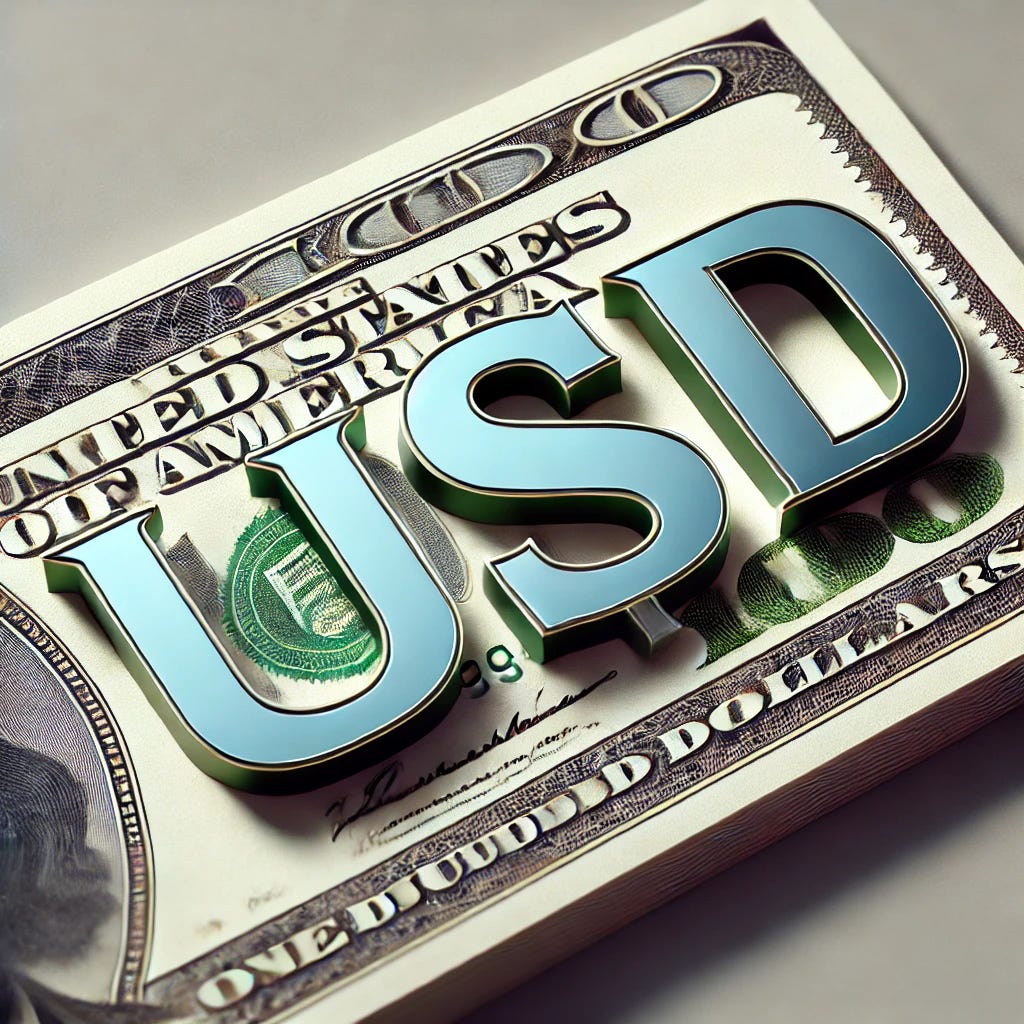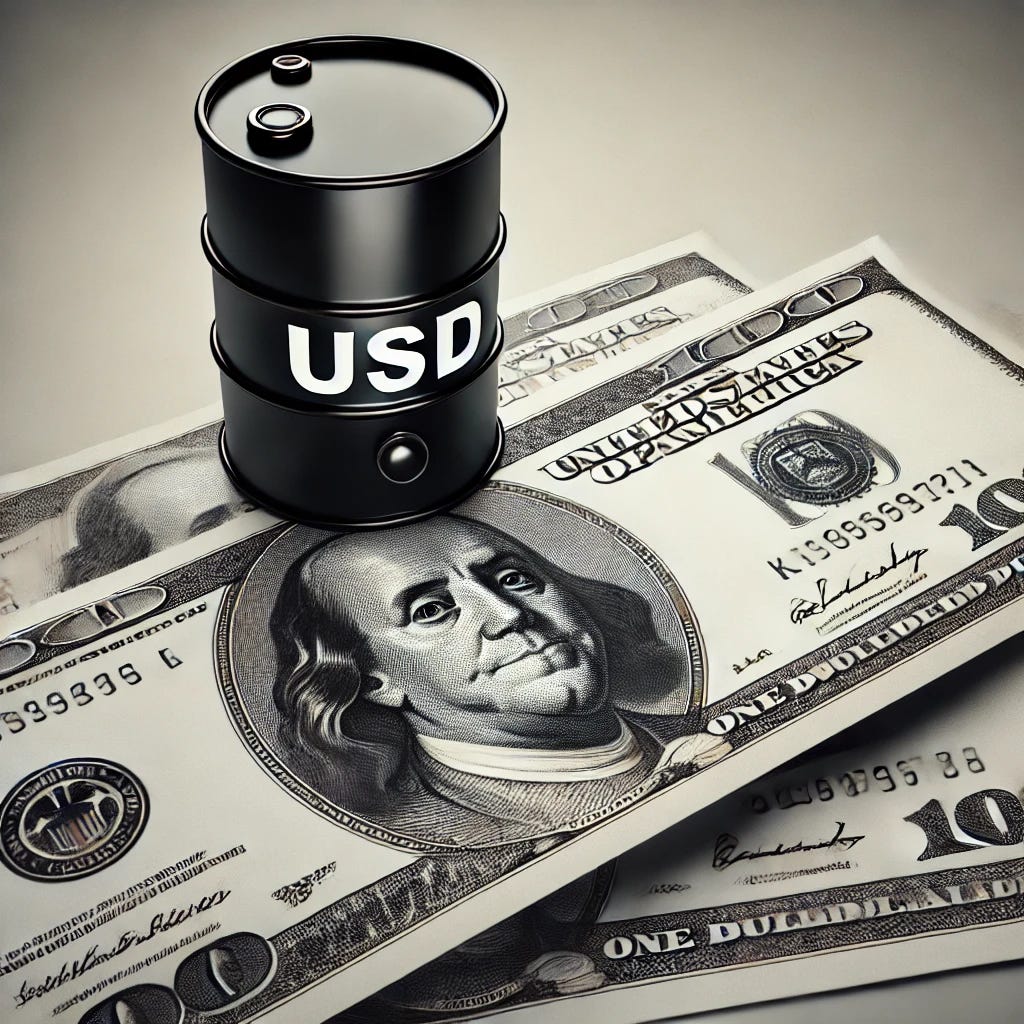As all of us traders know when you’re diving into the world of trading, it’s easy to get caught up in charts, indicators, and the latest price action. But one of the most consistent—and often overlooked—factors that can significantly influence your trades is the relationship between the US Dollar (USD) and commodities.
Understanding this correlation can give you a massive edge, particularly if you’re trading commodities like gold, oil, or even agricultural products. The dollar often acts like the heartbeat of the market for these assets, so if you’re able to read the signals the USD is giving off, you can position yourself for smarter, more informed trades.
So, let’s dive into this correlation, break it down in a way that’s easy to apply to your strategy, and look at a couple of real-world examples where this dynamic played out beautifully.
The Inverse Relationship Between the Dollar and Commodities
Let’s start with the basics. In general, there’s an inverse relationship between the US Dollar and most major commodities. When the USD strengthens, commodities tend to weaken, and when the USD weakens, commodities typically rally.
Why? It’s pretty straightforward—commodities are priced in dollars on the global market. So, when the dollar gains strength, it takes fewer dollars to purchase the same amount of a commodity. As a result, the price of the commodity goes down. Conversely, when the dollar weakens, it takes more dollars to buy that commodity, pushing its price higher.
But while this inverse relationship is generally reliable, there are times when it can break down or behave differently depending on other factors like geopolitical events, supply and demand shifts, or major policy announcements. As traders, we need to be mindful of these nuances.
Gold and the US Dollar: A Classic Case of Inverse Correlation
One of the best examples of this dynamic at work is the relationship between gold and the US Dollar. Gold is often seen as a hedge against inflation and a store of value when the dollar is weak. Historically, when the USD is falling, gold tends to rise.
Case Study 1: Gold and USD in 2020-2021
Let’s go back to the period between mid-2020 and early 2021. At this time, we were in the thick of the pandemic, and the US government had implemented several rounds of stimulus to keep the economy afloat. As a result, there were concerns about inflation, and the USD began to weaken against other currencies.
Meanwhile, gold was rallying hard. In fact, in August 2020, gold hit an all-time high of around $2,070 per ounce as traders flocked to the precious metal as a hedge against a weakening dollar and rising inflation expectations.
Here’s what made this period such a classic example of the USD-gold relationship: the weaker the dollar got, the more gold prices surged. Traders who were paying attention to the declining dollar were able to capitalize on the bullish momentum in gold.
But the correlation didn’t last forever. As we moved into early 2021, the Federal Reserve started to shift its tone, signaling that it might taper its stimulus programs and raise interest rates sooner than expected. The USD found support and began to strengthen. Sure enough, gold prices began to fall, dropping back below $1,800 per ounce by June 2021.
Key Takeaway: If you were watching the USD and gold relationship during this time, you could have used the weakening dollar as a signal to buy gold and then exited your positions as the dollar began to strengthen again.
Oil and the US Dollar: More Than Just an Inverse Relationship
Oil is another commodity that tends to have an inverse relationship with the dollar, but the correlation is a little more complex. Oil prices are affected by global supply and demand dynamics, geopolitical events, and OPEC decisions, but the strength of the USD plays a significant role in the price of crude oil.
Case Study 2: Oil Prices and the Dollar in 2022
Let’s look at a more recent example with oil.
In 2022, we saw a lot of volatility in oil prices. Early in the year, the Russia-Ukraine conflict sent shockwaves through global oil markets, pushing crude oil prices up to around $130 per barrel. At the same time, the US Dollar was strong due to rising interest rates and the Federal Reserve’s tightening policy. Normally, we’d expect high oil prices and a strong dollar to move inversely, but geopolitical factors were the dominant force here, breaking that typical correlation.
However, as the year progressed, the focus shifted from the conflict to inflation and central bank policies. The USD continued to strengthen, and by the end of the year, oil prices began to retreat, even though supply concerns remained. By October 2022, oil had fallen back to the $80-90 per barrel range as the dollar soared to multi-decade highs.
This case highlights that while the USD and oil typically move in opposite directions, external factors (like war or supply shocks) can temporarily override that correlation. But once those shocks settle, the inverse relationship often reasserts itself.
Key Takeaway: Oil is a commodity where you’ll often see short-term disruptions in the dollar-commodity relationship due to geopolitical or supply issues, but the USD’s strength still plays a significant role over the longer term.
When the Correlation Breaks: Key Factors to Watch
Like I mentioned earlier, the correlation between the dollar and commodities isn’t set in stone. There are several factors that can cause this relationship to weaken or even reverse in certain situations:
Geopolitical Events: Wars, sanctions, or trade embargoes can cause commodities to spike regardless of what the dollar is doing. For example, during the Russia-Ukraine war, oil prices surged even though the dollar remained strong.
Supply and Demand Shocks: A sudden change in supply (like an OPEC decision to cut production) can drive commodity prices up or down, regardless of what’s happening with the USD.
Central Bank Policy: When the Federal Reserve signals an interest rate hike or cut, the dollar can experience sharp movements. But commodities like gold may react more to inflation expectations than the dollar itself.
Inflation: Commodities are often seen as a hedge against inflation. So, even if the USD is strengthening, high inflation can push commodity prices higher. This is why in periods of high inflation, you may see gold or oil rising alongside a strong dollar.
How Traders Can Use This Correlation
Now that we understand the basic relationship between the dollar and commodities, the next step is applying this knowledge to your trades.
1. Use the Dollar Index (DXY)
The US Dollar Index (DXY) is a great tool to monitor the strength of the dollar. It tracks the USD against a basket of major currencies like the euro, yen, and pound. When the DXY is rising, it indicates a strengthening dollar, which may signal that commodity prices are about to drop.
2. Watch for Divergences
One of the most useful strategies is to look for divergences between the dollar and commodity prices. For example, if the DXY is making higher highs, but gold is also rising, that could signal a short-term decoupling, and you’ll want to dig deeper into what’s driving gold (e.g., inflation, geopolitical risks, etc.).
3. Trade Commodities with a Dollar Bias
If you see the USD strengthening and you expect that trend to continue, you might take a bearish stance on commodities like gold or oil. Conversely, if you expect the dollar to weaken due to monetary policy shifts, that’s often a green light to look for long positions in commodities.
Case Study 3: Using DXY to Trade Gold
In mid-2023, the DXY began to decline as the Federal Reserve paused its rate hikes. This signaled a potential weakening of the dollar, which typically means strength in commodities. Sure enough, gold began to rally from its June lows around $1,900, pushing back towards $2,000 by the fall.
If you were monitoring the DXY and gold during this time, you could have used the weakening dollar as a signal to buy gold. The inverse relationship played out perfectly, allowing traders to capitalize on the dollar’s weakness and gold’s rally.
Key Takeaway: Monitoring the DXY alongside commodity prices like gold can give you early signals of market shifts. Keep an eye on divergences and use them to time your entries and exits.
Wrapping It Up
The relationship between the US Dollar and commodities is one of the most reliable correlations in the market, but it’s not without its nuances. By keeping an eye on the dollar’s strength (using the DXY) and understanding the factors that can influence this relationship, you can position yourself for better trades in gold, oil, and other commodities.
Remember, the correlation is most reliable over the longer term, but short-term disruptions can and do happen. The key is being flexible in your approach, always watching for signs that the market might be behaving differently than usual.
As always, I love hearing your thoughts and experiences with these kinds of strategies, so feel free to drop a comment or reach out directly. Stay sharp, stay patient, and let’s Conquer these Markets!
Ryan Bailey
VICI Trading Solutions




